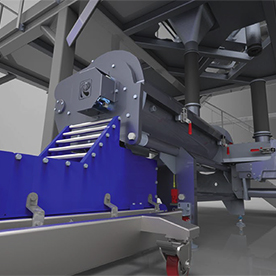Solid Edge has always lent its hand to aiding users to design faster and ST7 is no different. 3D Sketch, available in the part, assembly and sheet metal environment, speeds up modeling by rapidly defining 3D paths for sweep operations. 3D Sketch also allows you to model pipes and wires that are bent in more than one plane, and in the assembly environ¬ment for the definition of exact paths for piping, wiring and tubing.
Solid Edge ST7 speeds up the modeling of massive assemblies. Design faster and more flexibly by duplicating components or patterning components along a curve. Performance is faster in massive assemblies and now gives users the control over the extent to which the assembly is recomputed during open and save operations.
ST7 users now have the ability to create photorealistic renderings with integration of KeyShot. KeyShot is the easiest and fastest rendering software that allows users to produce beautiful product images and processes concurrently with modeling operations. Any changes to the model are automatically updated in the rendered image using the “Live Link” capability with no need for you to reassign materials, set up animations again or update any other settings.
Solid Edge SP, a SharePoint based data management solution received a facelift in the latest release. Visualizing data and assemblies has never been easier. Quickly create workflows for task completion and show multiple property cards at once.
Solid Edge ST7 brings a more intuitive user interface resulting in a faster learning curve and improved efficiency. A visual startup page provides easier access to templates, recent documents, instructional videos, the online community and standard parts. Learning paths that meet the needs of specific users are easier to access, and an improved 3D orientation “quick view cube” enables you to quickly understand model orientation and jump to common views.
Look for our What’s New in Solid Edge ST7 webinar coming soon!
Start your free trial of Solid Edge here.
Candis Spraul
PLM Marketing Specialist
Swoosh Technologies





















